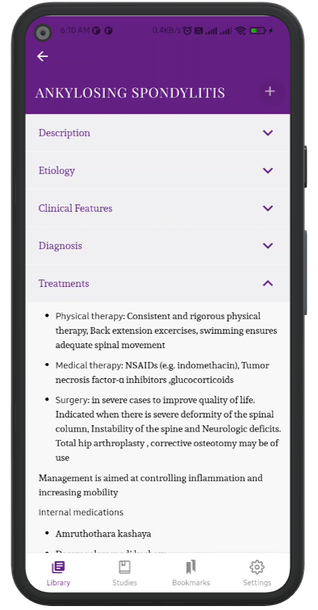ASTIGMATISM
Description
- Astigmatism (from the Greek, "a" meaning absence and "stigma" meaning point) is a refractive error (ametropia) that occurs when parallel rays of light entering the non-accommodating eye are not focused on the retina
- Astigmatism is a condition in which uneven curvature of the cornea hinders even refraction. Leads to the placement of the focal point anterior or posterior to the retina, which causes unclear vision at all distances
- The cornea of the normal eye has a uniform curvature, with resulting equal refracting power over its entire surface. In some individuals, the cornea is not uniform and the curvature is greater in one meridian (plane) than another, much like a football as a rugby ball. Light rays refracted by this cornea are not brought to a single point focus, and retinal images from objects (both distant and near) are blurred and may appear broadened or elongated. This refractive error is called astigmatism
Types
- Astigmatism can be described as regular or irregular
Regular astigmatism
- A more common form, the cornea would resemble a football or a rugby ball standing on one end or its side, or less often, tipped to one side
- In regular astigmatism, there are two principal meridians separated by 90 degrees
Irregular astigmatism
- Less common, the corneal “rugby ball” would appear out of its customary shape and/or bumpy
- It is described as a refractive state in which “refraction in different meridians confirms to no geometrical plane and the refracted rays have no planes of symmetry
Types
Symptoms
- Asthenopia, transient blurred vision, dull ache in eyes, frontal headache and sometimes nausea and drowsiness -in low astigmatism <1D
- Blurred vision and defective vision
- Elongation of objects may be noticed in high astigmatism
- Keeping the reading material close to the eyes
Signs
- Half closure of the lid
- Head tilt- In an attempt to bring their axes nearer to the horizontal or vertical meridians
Investigation
- Retinoscopy reveals different power in two different axes
- Ophthalmoscopy - Oval or tilted optic disc in patients with high degree of astigmatism
- Keratometry and Corneal Topography - Reveal different corneal curvature in two different meridians in corneal astigmatism
- Astigmatic fan test -Used to confirm the cylindrical correction
- Jackson's cross-cylinder test - To verify the strength and axis of the cylinder prescribed
Treatments
- Optical treatment - prescription of the appropriate cylindrical lens
- Refractive surgery
Ayurvedic Treatment
Internal medicines
- Pachanamrutha kashaya – initially to correct agni
- Vaiswanara choorna – initially to correct agni
- Shatpala gritha
- Triphala Gritha +Triphala choorna + honey
- Aswagandharishtha
- Sapthamrutha lauha
Procedures
- Virechana – Avipathi choorna
- Mukhalepa - Triphala+ Yasti choorna
- Seka - Triphala kashaya
- Siro lepa – Triphala + yashti+Lodra
- Jaloukavacharana – Forehead / eyelid
- Nasya - Ksheerabala avarthi , Jeevanthyadi gritha ,Dhanwantara taila
- Sirodhara/ Siropichu - ksheerabala Taila
- Anjana -Pasupatha varti , Chandanadi
- Tarpana - Jeevaneeya Gritha
- Putapaka – Jeevaneeya putapaka
Department
Salakya - Netra

